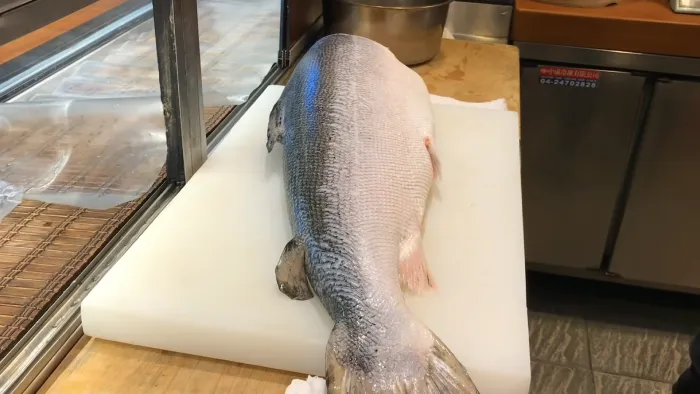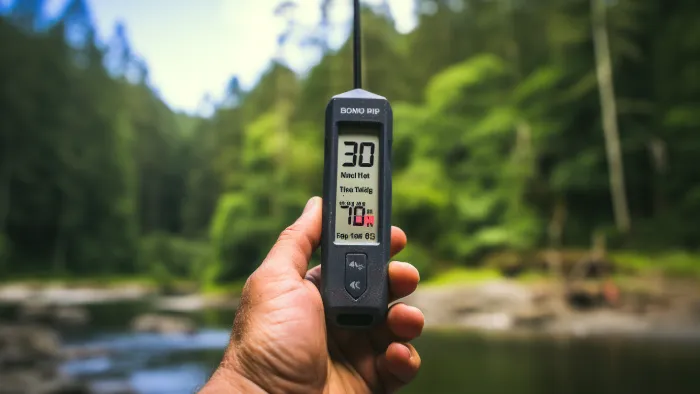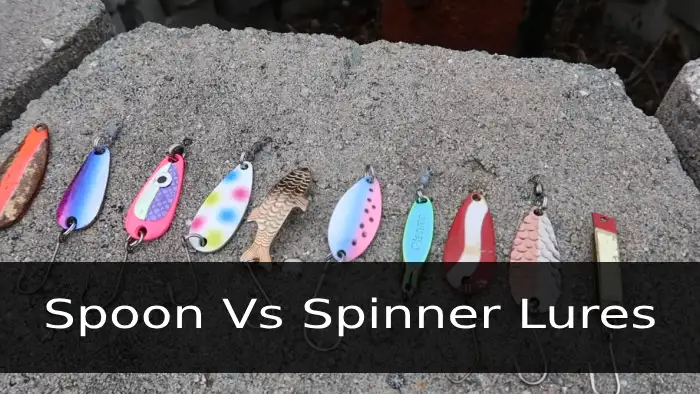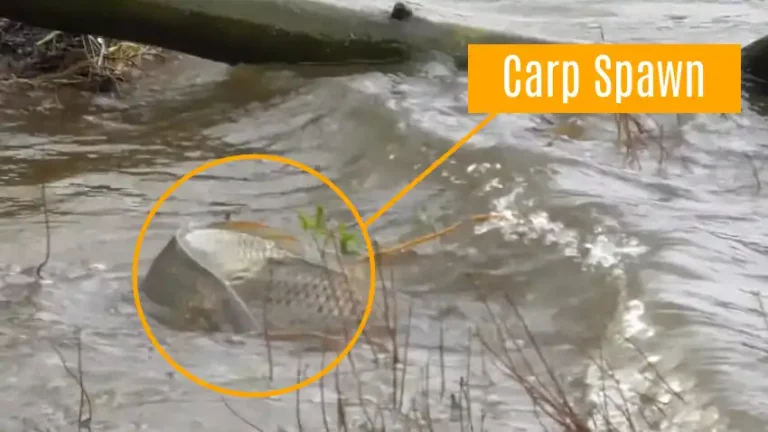Can You Eat Spawning Salmon: 5 Reasons to Try Fishing
Did you know that over 90% of spawning salmon are fished and eaten each year? It’s true. But have you ever wondered if eating fish spawning salmon is safe?
Spawning salmon are safe to fish and eat, but their quality and taste may be compromised compared to fresh, non-spawning salmon. When salmon spawn, they undergo physical and hormonal changes that can affect the texture and flavor of their flesh.
This article will discuss why you should eat these fish during their spawning season and their pros and cons. We will also look into why Alaskans tend to avoid eating pink salmon during this time and how to identify a spawning salmon.
Why Should You Eat Fish Spawning Salmon?
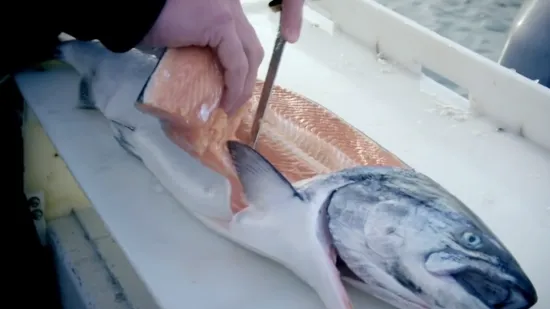
Several key points should be considered When you can eat fish spawning salmon. Here are most of them:
- Texture and flavor
- Quality
- Nutrient content
- Cultural practices
- Availability
Let’s see each of these key points in more detail.
1. Texture and Flavor
If you catch a fish spawning salmon, the texture and flavor may be different from salmon caught before they began the spawning process. The flesh of fished spawning salmon can become softer and less firm due to changes in their physiology as they prepare for spawning.
These changes are primarily driven by the release of hormones that promote the development of reproductive organs and the redistribution of energy resources towards reproduction. As a result, the texture of the flesh may become mushy and the flavor may be less pronounced compared to salmon caught before the spawning process.
The softness of the flesh is attributed to the breakdown of connective tissues and an increase in fat content. While some people may find the texture and flavor of fished spawning salmon less desirable, others may still enjoy its unique characteristics.
2. Quality
To determine the quality of the flesh, taste and examine the texture of a fished spawning salmon. The texture may be softer, and the meat may appear less firm and more flaky. The flavor of a fished spawning salmon can also be affected, with some individuals finding it less desirable than salmon caught before spawning.
The energy depletion during the migration and spawning process can impact the taste and texture of the flesh, resulting in a less optimal eating experience.
Keep in mind that individual preferences may vary, and some people may still enjoy the taste of fished spawning salmon. However, it is important to note that the overall quality may not be as high as salmon caught before they begin spawning.
- Softer texture
- Less firm, more flaky meat
- Potentially less desirable flavor
3. Nutrient Content
The nutrient content of fished spawning salmon can still be valuable, despite their lower fat content compared to pre-spawning salmon. Although the fat content may be reduced during the spawning process, fished salmon still provide essential nutrients that are beneficial to your health.
These salmon are a rich source of high-quality protein that helps build and repair muscles. Additionally, they contain significant amounts of omega-3 fatty acids, known for their anti-inflammatory properties and potential cardiovascular benefits. These fatty acids are crucial for brain health and may reduce the risk of certain chronic diseases.
Furthermore, fish spawning salmon also provide essential vitamins and minerals, such as vitamin D, vitamin B12, selenium, and potassium. Therefore, incorporating fished spawning salmon into your diet can still contribute to a well-rounded and nutritious meal.
4. Cultural Practices
When considering cultural practices, it’s important to recognize the significance of consuming fish spawning salmon during the spawning season. In some cultures, this practice holds deep meaning and is integral to local customs and traditions.
Here are a few reasons why fished spawning salmon is cherished:
- Connection to heritage and identity: Consuming fished spawning salmon is a way for communities to honor their ancestral traditions and maintain a strong cultural identity.
- Seasonal abundance: The spawning season brings an abundance of salmon. Communities view this as a time of celebration and feasting.
- Sustainability and conservation: Many cultures have developed sustainable fishing practices that ensure the long-term preservation of salmon populations, promoting both environmental stewardship and cultural resilience.
These cultural practices surrounding fished spawning salmon highlight the intersection of food, tradition, and community, making them an integral part of cultural heritage.
5. Availability
During the spawning season, fished salmon are more readily available for consumption. Salmon return to their birthplace to lay eggs during this period, and fishermen often catch them.
The availability of fished spawning salmon can vary depending on the specific location and the abundance of salmon populations. It is important to note that not all salmon are caught during their spawning season, as some may be caught at other times of the year.
However, if you specifically want to consume fished spawning salmon, it is more likely to find them during their spawning season. This availability allows for a convenient option for fishing and consumption, as you can enjoy the taste and benefits of salmon when they are most abundant.
Are spawning pink salmon good to eat?
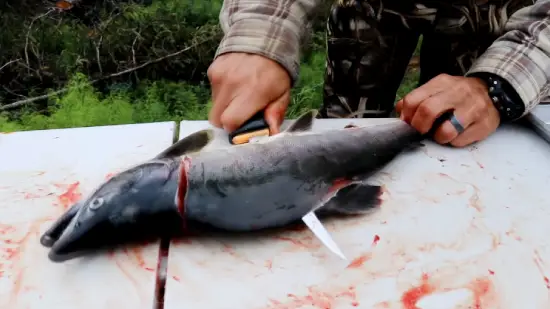
Spawning pink salmon’s pale flesh has a mild taste and excellent texture. But, when it comes to eating spawning salmon, there are some factors to consider.
While the taste and texture of the flesh may still be good, the nutritional composition of spawning salmon can change. During the spawning process, salmon undergo physical changes, including decreased body fat and increased muscle tissue. This can result in a leaner flesh with a slightly different flavor.
Additionally, spawning salmon may have higher levels of certain compounds, such as lactic acid, which can affect the taste. Therefore, while it is still possible to eat spawning pink salmon, it is important to be aware of these potential differences in taste and nutritional composition.
Why do Alaskans not eat pink salmon?
Alaskans typically avoid consuming pink salmon due to its lower quality meat compared to other species. Pinks and chums are enjoyed fresh from the ocean or canned and smoked, but they simply don’t measure up to the kings, reds, and silvers.
The lower quality of pink salmon meat is a result of its tendency to deteriorate quickly once it enters fresh water during the spawning process. This deterioration affects the taste and texture of the meat, making it less desirable for consumption.
Alaskans prioritize the enjoyment of higher quality salmon species, which offer a superior culinary experience. Therefore, they tend to steer clear of pink salmon and opt for the more flavorful and succulent alternatives.
How can you spot a spawning salmon?
When identifying a spawning salmon, look for physical changes like vibrant colors and hooked jaws.
Spawning salmon transform as they prepare to reproduce. The vibrant colors, such as red, green, and purple, are caused by hormonal changes that signal their readiness to spawn. These changes are important for attracting a mate and defending their territory.
Another noticeable change is the development of a hooked jaw, also known as a ‘kype.’ This adaptation allows the salmon to grip a female’s body during spawning. The hooked jaw clearly indicates that the fish is in the spawning phase of its life cycle.
What causes salmon to change color after they spawn?
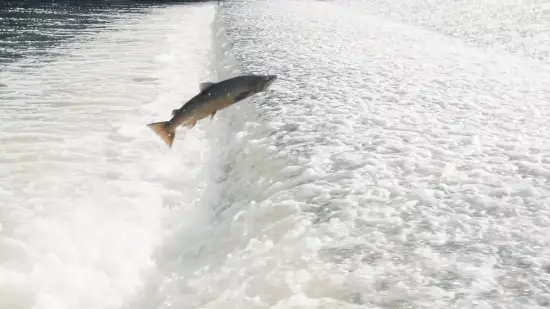
After they spawn, hormonal changes trigger the vibrant color change in salmon. This process is essential for their reproductive success and serves as a visual cue for attracting mates.
Here is why the color change in salmon after spawning is so fascinating:
1. Stunning displays
The transformation of male salmon into vibrant hues is a breathtaking sight to behold. Their bodies undergo a kaleidoscope of colors, ranging from deep reds to bright greens and blues. It is a natural spectacle that captures the attention of both scientists and onlookers.
2. Communication and competition
The color change in salmon serves as a means of communication between males, indicating their readiness to mate and establishing dominance hierarchies. The more intense and striking the coloration, the more likely they are to attract a female partner.
3. Survival of the fittest
The vibrant coloration is a visual indicator of the male’s overall health and genetic quality. Females are known to prefer males with brighter colors, as it suggests that they are physically fit and have a greater chance of producing healthy offspring.
The Taste Adventure of Spawning Salmon
While eating fished spawning salmon is technically possible, it may not be the most appetizing option.
The pros include the abundance of nutrients in the fish during this time, but the cons outweigh them. The taste and texture of spawning salmon can be off-putting, and their flesh may have a stronger fishy flavor.
Additionally, their physical appearance, with their dull color and ragged fins, can be visually unappealing.
It is best to opt for non-spawning salmon for a more enjoyable dining experience.

